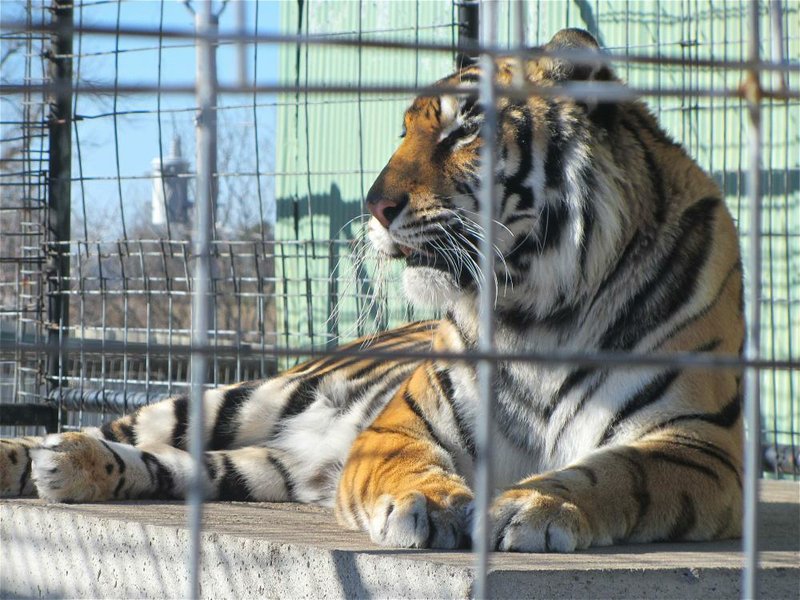TURPENTINE CREEK WILDLIFE REFUGE - Believe it or not, there are more tigers living in the United States today than in their native habitats of India and elsewhere in Asia.
This unnatural turn of events, in a world of endangered species, speaks to the purpose of Turpentine Creek Wildlife Refuge. The rural habitat eight miles south of Eureka Springs houses more than 100 of the magnificent striped predators, along with a smattering of other large cats - and one frisky grizzly bear.
Visitors are welcome at Turpentine Creek. The admission fee includes a guided walking tour that offers close encounters - but not too close, and always separated by fences or cages - with a lot more tigers than you are ever likely to meet anywhere else on the planet.
On a recent afternoon, wife Marcia and I, along with a half-dozen other folks, were shown around by a staff intern, Michelle,who knew every big cat by name. She sometimes told us about their personality or how they’d wound up at the 459-acre refuge. Names like Raja and Big Nasty fit the fearsome-carnivore image; others, like Ralph and Goober, sounded less apt.
At one point in our half hour stroll, Michelle pointed out a clearing in a field below where enclosures were built last year for 34 big cats rescued from an aged woman in Crawford County who could no longer care for them. It was the largest rescue since the refuge opened in 1992. Principal founder Tanya Jackson Smith still serves as president of the nonprofit operation.
Turpentine Creek’s tigers are among the estimated 5,000 in the United States, compared with roughly 3,500 believed to survive in the wild in Asia.
Some of the U.S. population can be found in zoos, with others housed at a score or so licensed refuges like Turpentine Creek. But a majority are in the hands of individuals, some of whom imagined very wrongly that a large carnivore would make a good pet. Others, to their shame, trade for profit in exotic animals.
The main aim of the refuge, as stated by staff biologist Mary Schlieve in its current newsletter, “is to help save these big cats and provide them with a … home where they can roam and run ‘free’ in grassy habitats.” As funding permits, it is hoped that all the animals can be moved into those more natural settings from the cement-floor cages originally built.
We had to leave before the 4 p.m. feeding, which the refuge touts as “an event not to be missed. Every day, the hard-working interns prepare and feed over 1,000 pounds of meat. While viewing feeding time, visitors can experience the power of these big cats, hear the low growl of the tigers, high-pitched screams of the cougars and caroling of the lions.”
But we did have time to check out Bam Bam. This 600-pound male grizzly bear, rescued in 2009 from a private owner, was frolicking in the swimming pool of his recently built enclosure. The 6-year-old’s antics provided a playful final vignette in our illuminating look at the 21st-century challenges of wildlife conservation.
Turpentine Creek Wildlife Refuge, off Arkansas 23 eight miles south of Eureka Springs, is open 9 a.m.-5 p.m. daily in winter, with hourly guided tours 11 a.m.-4 p.m. and feeding at 4. An all-day pass is $20 for adults, $15 for teens, $10 for visitors ages 4-12 and 65 or older.
Turpentine Creek has eight lodging units priced at $150 per night and six recreational-vehicle sites at $25 per night. An all-day photo shoot is available for $200.
Call (479) 253-5841 or visit turpentinecreek.org.
Weekend, Pages 38 on 02/06/2014
